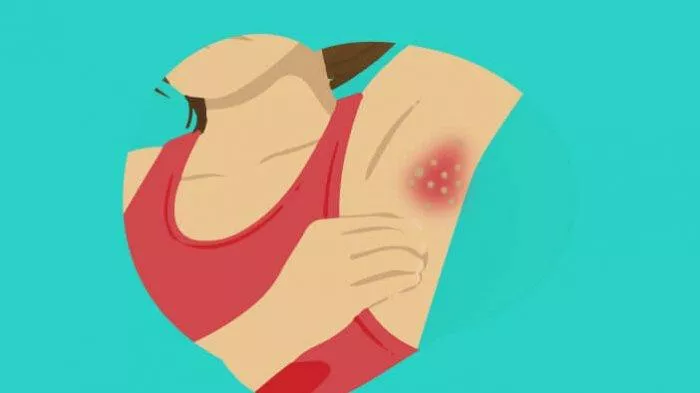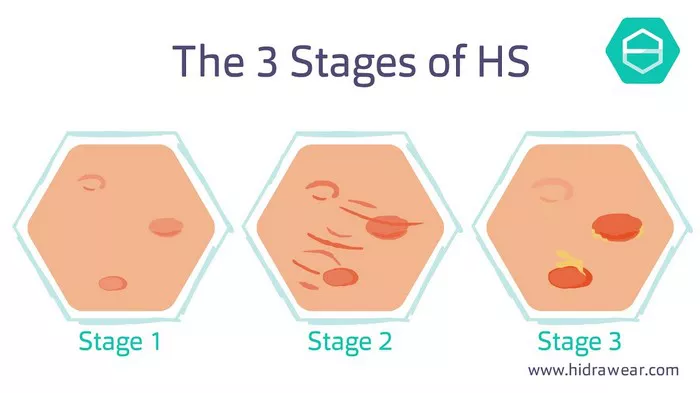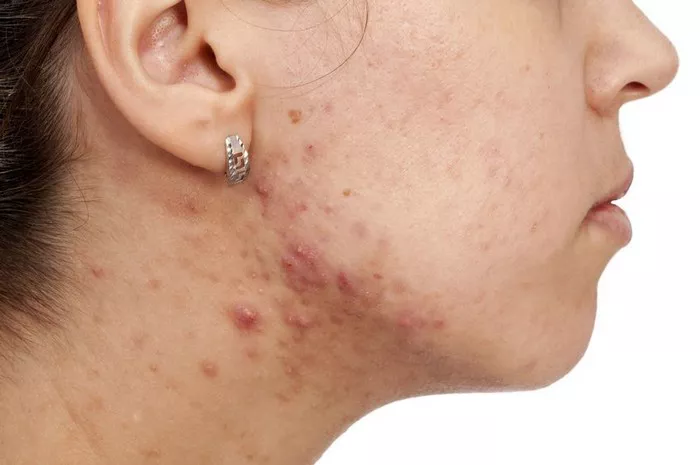Hidradenitis suppurativa (HS) is a chronic skin condition that causes painful lumps and abscesses. These typically appear in areas where skin rubs together, such as the armpits, groin, and under the breasts. Understanding why HS occurs can help in managing the condition and reducing its impact on daily life.
What is Hidradenitis Suppurativa?
Hidradenitis suppurativa is more than just a skin problem. It is a long-term condition that affects the hair follicles. It leads to the formation of painful bumps under the skin. These bumps can break open and drain fluid, causing discomfort and sometimes leading to infections.
Symptoms of Hidradenitis Suppurativa
Common symptoms include:
- Painful lumps or nodules
- Swollen areas under the skin
- Abscesses that drain pus
- Scarring or tunnel-like formations under the skin
Symptoms can vary from person to person. Some people experience flare-ups, while others may have long periods without symptoms.
SEE ALSO: What Deodorant to Use for Hidradenitis Suppurativa
Causes of Hidradenitis Suppurativa
The exact cause of hidradenitis suppurativa is not fully understood. However, several factors contribute to its development. Let’s explore these factors in detail.
1. Genetic Factors
Genetics play a significant role in HS. People with a family history of the condition are more likely to develop it themselves. Studies suggest that certain genes may make individuals more susceptible to HS.
2. Immune System Response
Hidradenitis suppurativa is linked to an abnormal immune response. The body’s immune system mistakenly attacks hair follicles, leading to inflammation. This reaction is similar to other autoimmune conditions, where the body’s defense system turns against itself.
3. Hormonal Influences
Hormones may also play a role in HS. Many individuals notice that their symptoms worsen during hormonal changes, such as during menstrual cycles. Hormones can affect the skin’s oil production and its overall health.
4. Obesity
Obesity is a significant risk factor for hidradenitis suppurativa. Extra weight can cause friction in skin folds, leading to irritation and inflammation. Additionally, fat cells can produce inflammatory substances that exacerbate the condition. Losing weight may help reduce the frequency and severity of flare-ups.
5. Smoking
Smoking is another important risk factor. Studies have shown that smokers are more likely to develop HS. Smoking affects blood flow and the immune system, increasing the risk of inflammation. Quitting smoking can be beneficial for managing the condition.
6. Skin Friction and Sweat
Areas of the body that experience friction and sweating are more prone to HS. This is why it often occurs in skin folds. When skin rubs together, it can irritate hair follicles and trigger inflammation. Keeping affected areas dry and minimizing friction can help prevent flare-ups.
Pathophysiology of Hidradenitis Suppurativa
To understand why hidradenitis suppurativa happens, it’s essential to explore the underlying mechanisms.
1. Follicular Occlusion
The process starts with follicular occlusion. Hair follicles become blocked, often due to a buildup of dead skin cells and sebum (oil). This blockage can lead to the formation of cysts or abscesses.
2. Inflammatory Response
Once the follicles are blocked, the body’s immune system responds with inflammation. White blood cells flood the area, causing swelling and redness. This inflammation can result in painful lumps and abscesses.
3. Bacterial Infection
In some cases, bacteria can enter the blocked follicles, leading to infection. This can cause additional pain, swelling, and pus formation. Antibiotics may be necessary to treat these infections.
4. Scarring and Tunnel Formation
Chronic inflammation can lead to scarring and the formation of tunnels under the skin, known as sinus tracts. These can be difficult to treat and may require surgical intervention.
Risk Factors for Hidradenitis Suppurativa
While anyone can develop HS, certain factors increase the likelihood of its occurrence.
1. Age and Gender
Hidradenitis suppurativa typically begins in late adolescence or early adulthood. It is more common in women than in men.
2. Family History
As mentioned earlier, a family history of HS can increase the risk. If a close relative has the condition, you may be more likely to develop it.
3. Other Health Conditions
Certain health issues are associated with HS, including:
- Crohn’s disease
- Diabetes
- Arthritis
- Metabolic syndrome
Having one of these conditions may increase the risk of developing HS.
Diagnosis of Hidradenitis Suppurativa
Diagnosing hidradenitis suppurativa can be challenging. Doctors often rely on the following methods:
1. Medical History
A thorough medical history is crucial. Doctors will ask about symptoms, family history, and any other health conditions.
2. Physical Examination
A physical exam helps doctors assess the severity and extent of the condition. They will look for characteristic signs of HS, such as abscesses and scarring.
3. Additional Tests
In some cases, doctors may order blood tests or imaging studies to rule out other conditions. This can help confirm a diagnosis of HS.
Managing Hidradenitis Suppurativa
While there is no cure for hidradenitis suppurativa, several treatment options can help manage symptoms.
1. Lifestyle Changes
Making lifestyle changes can significantly impact the condition. Here are some helpful strategies:
Weight Management: Losing weight can reduce friction and inflammation.
Avoiding Triggers: Identifying and avoiding triggers, such as tight clothing or excessive sweating, can help minimize flare-ups.
Smoking Cessation: Quitting smoking can improve skin health and reduce inflammation.
2. Medical Treatments
Several medical treatments can help manage HS:
Topical Treatments: Creams or ointments containing antibiotics or anti-inflammatory medications can be effective for mild cases.
Oral Antibiotics: For moderate to severe HS, doctors may prescribe oral antibiotics to treat infections and reduce inflammation.
Hormonal Therapy: Hormonal treatments, such as birth control pills, can help some women manage symptoms.
Immunosuppressive Medications: In severe cases, immunosuppressive drugs may be prescribed to reduce the immune response.
3. Surgical Options
For individuals with severe or persistent HS, surgery may be necessary. Surgical options include:
Drainage of Abscesses: This procedure can relieve pain and prevent further infection.
Removal of Affected Tissue: In more severe cases, surgery may involve removing the entire affected area to prevent recurrence.
Conclusion
Hidradenitis suppurativa is a complex and painful condition that can significantly impact quality of life. While the exact cause remains unclear, factors such as genetics, immune response, obesity, and hormonal changes play crucial roles. By understanding the underlying mechanisms and risk factors, individuals can work with healthcare providers to develop effective management strategies.
If you suspect you have hidradenitis suppurativa, seek medical advice for a proper diagnosis and treatment plan. With the right care and lifestyle adjustments, it is possible to manage this challenging condition and improve your overall well-being.
Related topics:

























